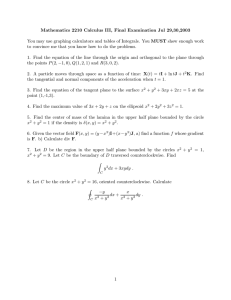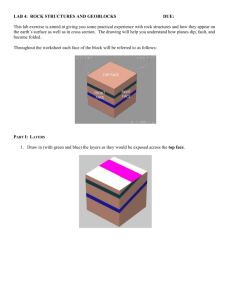This exercise is aimed at giving you some practical experience... EXERCISE 2: ROCK STRUCTURES
advertisement
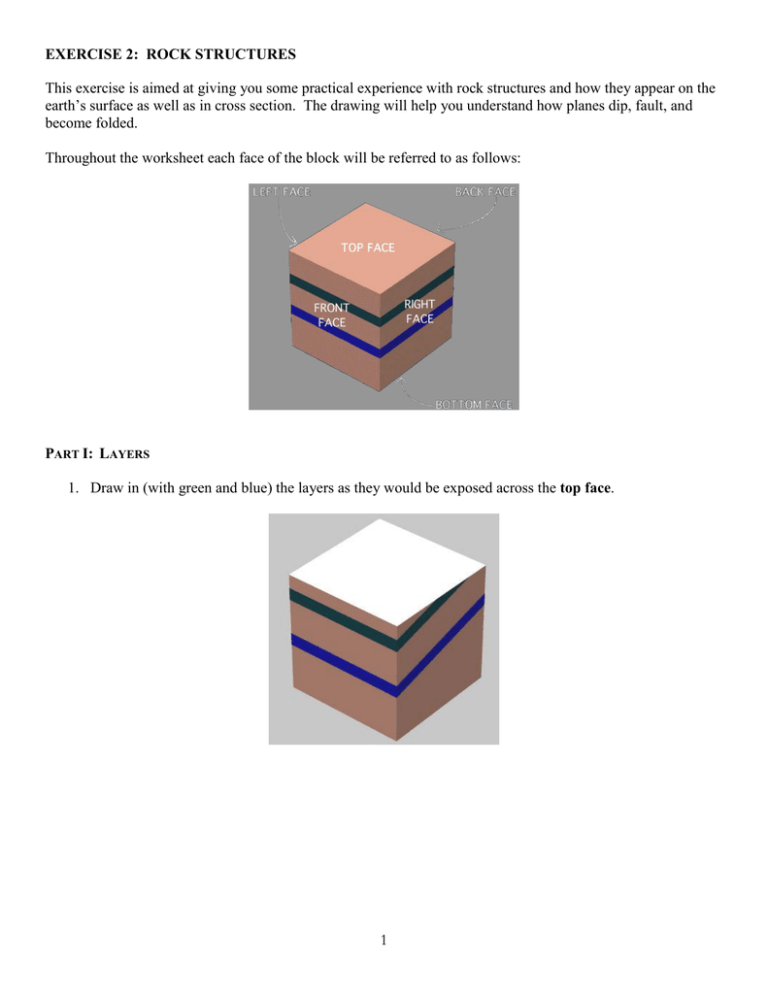
EXERCISE 2: ROCK STRUCTURES This exercise is aimed at giving you some practical experience with rock structures and how they appear on the earth’s surface as well as in cross section. The drawing will help you understand how planes dip, fault, and become folded. Throughout the worksheet each face of the block will be referred to as follows: PART I: LAYERS 1. Draw in (with green and blue) the layers as they would be exposed across the top face. 1 2. For the blocks below imagine cutting each one along the cutting planes (the gray squares that intersect each block) and removing the part of the block in front of the plane. For each block draw what the exposed face along the cutting place would look like in the empty squares below. 3. Based on how these moderately dipping layers intersect the visible faces, draw what the left face looks like in the empty square below. 2 4. Imagine cutting each block along the cutting planes and removing the part of the block in front of the plane. Draw on the blank blocks below the three exposed faces of both blocks after the cutting plane has removed the front portion. 3 5. These layers are steeply dipping. Look at the top, front and right faces of the block to determine what the back face looks like and then draw it in the empty square below. 6. These planar layers are at an oblique angle – they are not parallel to any face. Using the front and right sides as a guide, draw on image below how the layers would cross the top face. 4 7. Imagine cutting each block along the gray cutting planes and removing the part of the block in front of the plane. For both blocks, sketch the exposed front face along the cutting plan after it is cut. 5 8. Circle the small image below that could be the back face of the block. 6 9. One of the four images below shows a straight-on view of the block from the right after it was cut and the right portion of the block removed. Circle which of the four choices shows the correct view of the exposed right face. 7 PART II: FOLDS 1. Draw in the empty square what the folded layers (or syncline) would look like on the back face. 2. For each syncline below, draw what the exposed face along the cutting plane would look like in the empty squares. 8 3. For both anticlines below, draw what the face exposed along the cutting plane would look like in the squares provided. 4. For the plunging syncline below, sketch the right face of the block. 9 5. For each plunging syncline below, draw what the exposed face along the cutting plane would look like in the squares provided. 6. Look at the plunging anticline below and sketch what the back face would look like in the empty square. 10 7. Look at the vertical fold below and sketch what the bottom face would look like in the space provided. 8. Look at the vertical folds below and sketch what the exposed face would look like if part of the block in front of the cutting plane were removed. 11 9. Below on the left is an image of a block with a fold in it. What type of fold is this? Which two faces of the block could the image on the right represent? Fold type: 12 Face 1: Face 2: 10. Below, the same small block is shown with four different cutting planes. Circle the small image that, when cut and the front-most portion removed, would result in the image you see above the small squares. Hint: Pay attention to the orientation of the cutting plane and where it intersects each folded layer. 13 11. Below is an image of a block containing a fold and a cutting plane. Circle the small image below that could be the top face of the block after the cutting plane removes the top portion. 14 12. The image below is of a fold that is overturned, rather than vertical. In the empty square sketch the appearance of the bottom face. 15 Answer the following questions: 1. If you were looking at one fold in isolation on the land surface, how would you tell whether it is a syncline or an anticline? 2. What is the relationship between the plunge of the folds and the dips of the beds located along the axes of the folds? 3. How would you tell, qualitatively, the dip of the axial plane of a given fold from the dips of the layers on the two limbs of the fold? PART III: FAULTS 1. The back half of the block has been faulted to the left or right and then eroded to form a cube again. In which direction did the back block shift? (Circle one) What type of fault is represented? 16 LEFT RIGHT Fault type: 2. In which direction (up or down) has the fault shifted the back block in the image below? (Circle one) UP DOWN 3. Below, vertical layers have been faulted. The back block has been faulted in one direction only. Which direction (up, down, left, right) was it? (Circle one) What type of fault is this? UP DOWN LEFT RIGHT Fault type: 4. With arrows, indicate a possible combination of faulting motions for the back block that would result in the image below 17 5. The block below contains a synclinal fold that has been faulted. In which one direction was the back block faulted? (Circle one) UP DOWN LEFT RIGHT 6. If the fault below is an oblique-slip fault, in which directions did the back block get displaced before it was eroded? (Circle one) UP and RIGHT UP and LEFT DOWN and RIGHT DOWN and LEFT Answer the following questions: 18 1. What is the difference between separation and displacement on a fault? 2. What is the minimal set of data you would need to compute the displacement on a fault? 19 MIT OpenCourseWare http://ocw.mit.edu 12.001 Introduction to Geology Fall 2013 For information about citing these materials or our Terms of Use, visit: http://ocw.mit.edu/terms.
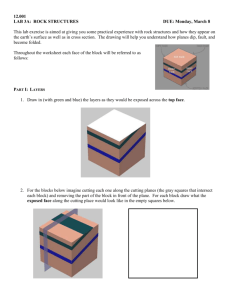

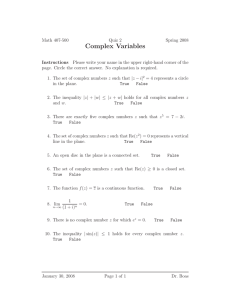
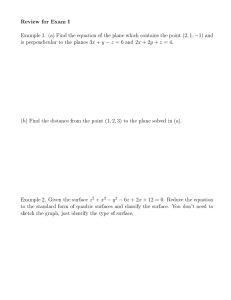
![Solution of ECE 316 Test #9 S03 3/26/03 [ ] ( )](http://s2.studylib.net/store/data/011925749_1-82ea23310f2eb085e0f962c1099600b7-300x300.png)
